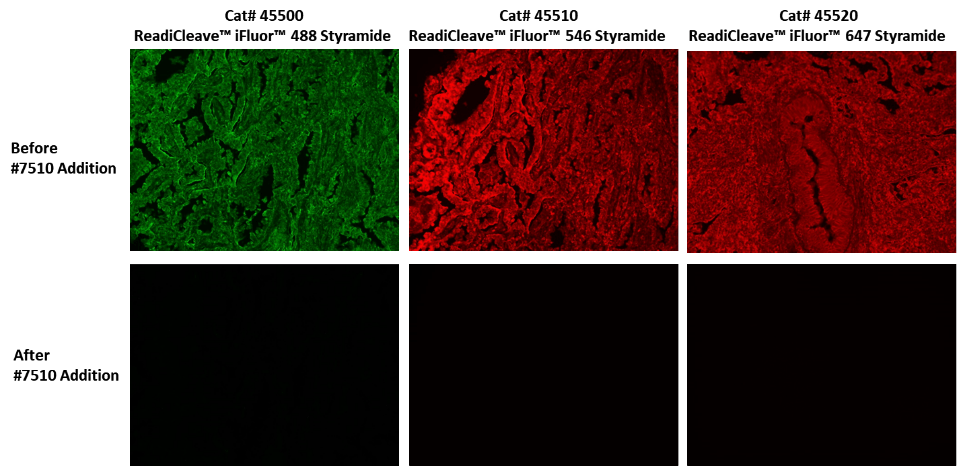ReadiCleave™ AML Cleavage Buffer
5X Aqueous Solution
ReadiCleave™ AML Cleavage Buffer provides an optimized formula to effectively remove the fluorescence tags from our ReadiCleave™ AML-labeled biological targets when needed. The removal of the fluorescent ReadiCleave™ AML tags may make the fluorescence imaging more compatible with the downstream analysis of a biological target by other techniques, e.g., MS analysis. Using ReadiCleave™ AML Cleavage Buffer alongside ReadiCleave™ Styramides enables multiplexed fluorescence imaging applications in cells and tissues. ReadiCleave™ Styramides are the new iteration of our PSA products that add the reversible capability to chemically remove the PSA staining on tissue or in cells (if desired) while preserving the integrity of tissue samples.


| Catalog | Size | Price | Quantity |
|---|---|---|---|
| 7510 | 1 mL | Price |
Physical properties
| Solvent | Water |
Storage, safety and handling
| H-phrase | H303, H313, H333 |
| Hazard symbol | XN |
| Intended use | Research Use Only (RUO) |
| R-phrase | R20, R21, R22 |
| Storage | Freeze (< -15 °C); Minimize light exposure |
Contact us
| Telephone | |
| Fax | |
| sales@aatbio.com | |
| International | See distributors |
| Bulk request | Inquire |
| Custom size | Inquire |
| Technical Support | Contact us |
| Request quotation | Request |
| Purchase order | Send to sales@aatbio.com |
| Shipping | Standard overnight for United States, inquire for international |
Page updated on December 12, 2025
